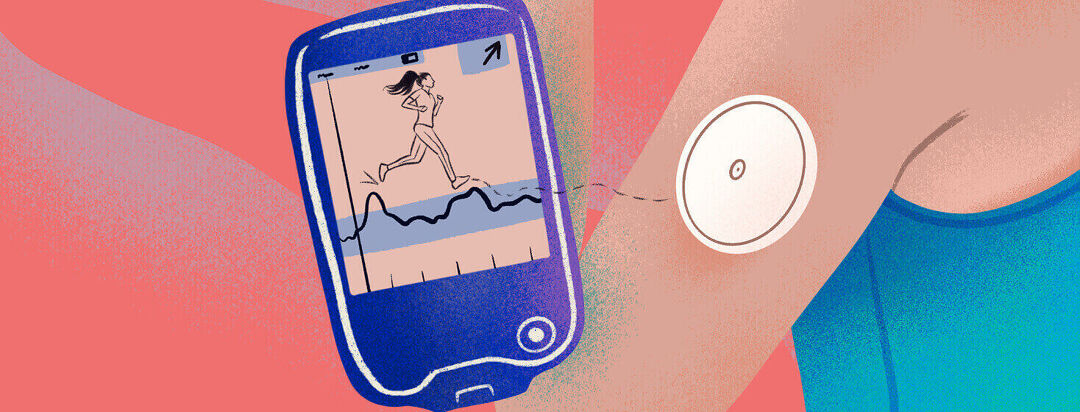No Prescription Needed: Comparing Options for Continuous Glucose Monitoring
Checking your blood glucose with a glucometer is a great way to determine what is or is not working for your diabetes management plan. Until now, glucometers were the only over-the-counter (OTC) option for monitoring your glucose accurately.
Let's face it, some other OTC products, like glucose monitoring watches, aren't up to snuff. But in 2024, that all changed. As of June 2024, the FDA has approved not 1, not 2, but 3 OTC continuous glucose monitors (CGMs). Let's review what a CGM is and then explore the over-the-counter CGM options.1-3
What are continuous glucose monitors?
CGMs are small, wearable devices that continuously measure your glucose levels. They do this using a small wire (sensor) that sits under your skin and measures the amount of glucose in your interstitial fluid. A transmitter is connected to the sensor and sits on top of your skin. It transmits your glucose information to a receiver, which for most people is their smartphone.
With a CGM, you can see what your glucose is doing at any time of the day or night. Is it stable, rising, or falling? CGMs are used for 10 to 14 days before you replace them with a new one. Until 2024, all CGMs required a prescription in the United States. And for people with type 2 diabetes, insurance coverage has been a significant barrier to getting one.
This or That
Do you use a continuous glucose monitor?
What are the approved over-the-counter CGMs?
Over-the-counter means you do not need a prescription from your doctor to get a device. There are 2 OTC options from the Abbott company and 1 from the Dexcom company. Both are the leaders in prescription CGMs.
Dexcom's Stelo
The first CGM approved by the FDA, Stelo, is for people over 18 years old with diabetes who are not on insulin. It is not the right fit for someone who struggles with severe low blood glucose. It's worn for 15 days and is linked to an app on your smartphone.1
Abbott's Libre Rio
Approved in June 2024, the Libre Rio is also for people with diabetes over 18 years old and not on insulin. It has a wide range for detecting glucose patterns: 40 to 400 mg/dl. It is worn for 14 days and is linked to an app on your smartphone.2
Abbott's Lingo
Approved in June 2024, Lingo is for people WITHOUT diabetes. It is meant to be used as a tool to improve one's health and wellness. So, it may be a good fit for those with prediabetes. It's worn for 14 days, and data is linked to a health coaching app on your smartphone.3
The Stelo was set to be released to pharmacies in summer 2024, but it's unknown when the Abbott options will be available. At the time of this writing, the costs/pricing of these devices had not been announced.1
Differences between prescription and OTC CGMs
These OTC options open a lot of doors for people with diabetes. CGMs give much insight into glucose trends in real time and over time.
However, they only offer some of the features a prescription CGM does. Here are some differences.
Alerts
Prescription CGMs have alerts to notify users if they have high or low blood glucose. It appears that this is not available in OTC options. Also, prescription CGMs update glucose information every 1 to 5 minutes, whereas some of the OTC options, like Stelo, update only every 15 minutes.1-3
Sharing apps
It's unlikely that OTC CGMs will offer share app features like prescription CGMs do. Share apps allow the person with diabetes to connect their CGM data to a friend or family member's phone. That means a friend or family member can get real-time information about their loved one if needed.
Flexibility
Prescription CGMs, such as the Dexcom G7, can be used by children as young as 2 years old. Dexcom's CGMs can also connect to smartwatches and insulin pumps. These options give more flexibility and variety to users than OTC CGMs.4
How to determine what's best for you
As with any diabetes tool or treatment option, nothing is the right fit for everybody. Exploring new possibilities to find out whether they work for you will help you make a final decision.
To further support you in trying new diabetes technologies, ask for a referral to a certified diabetes care and education specialist (CDCES). Often, they can help you understand the data you're gathering and how to use it for successful diabetes management.

Join the conversation